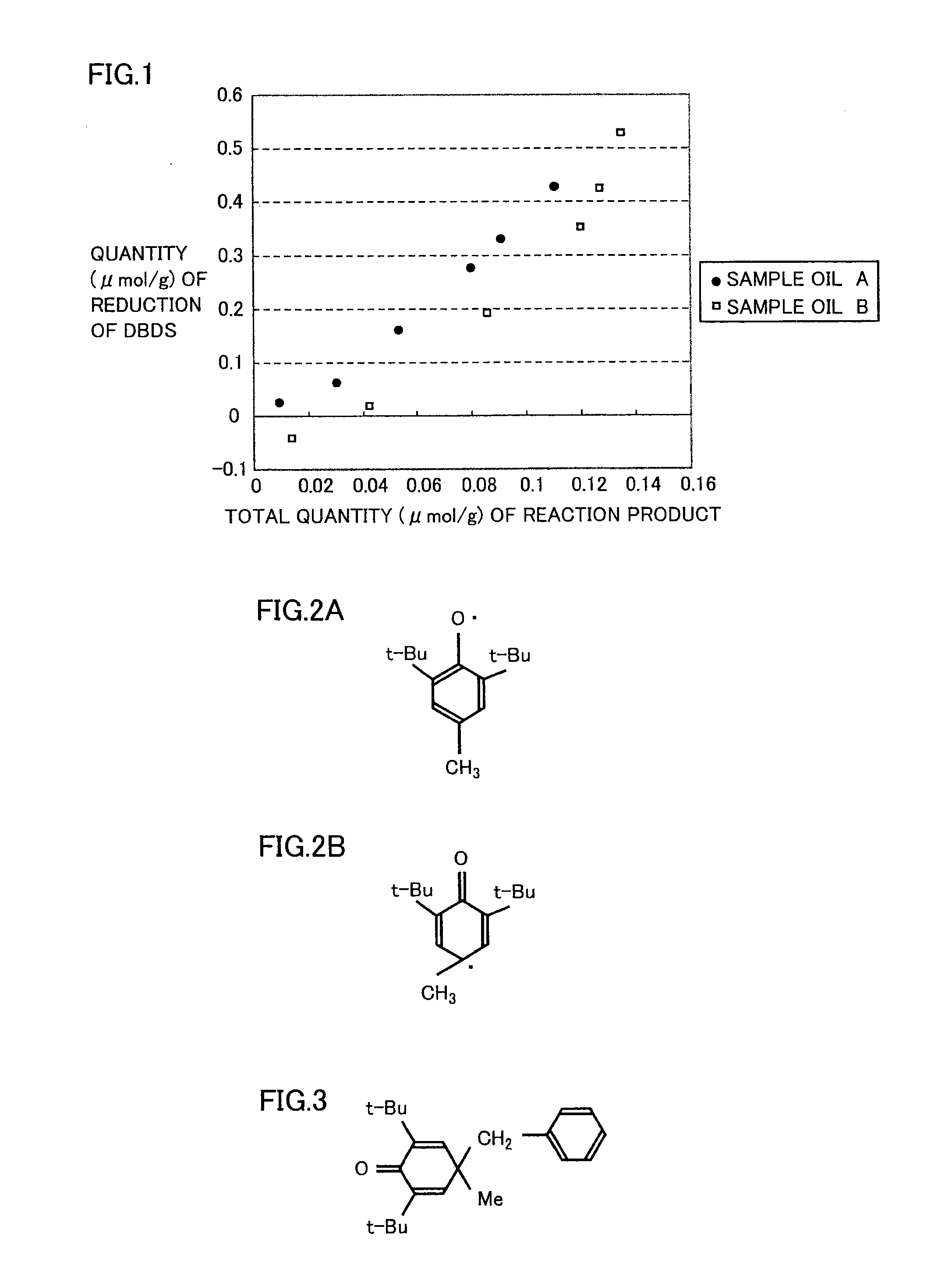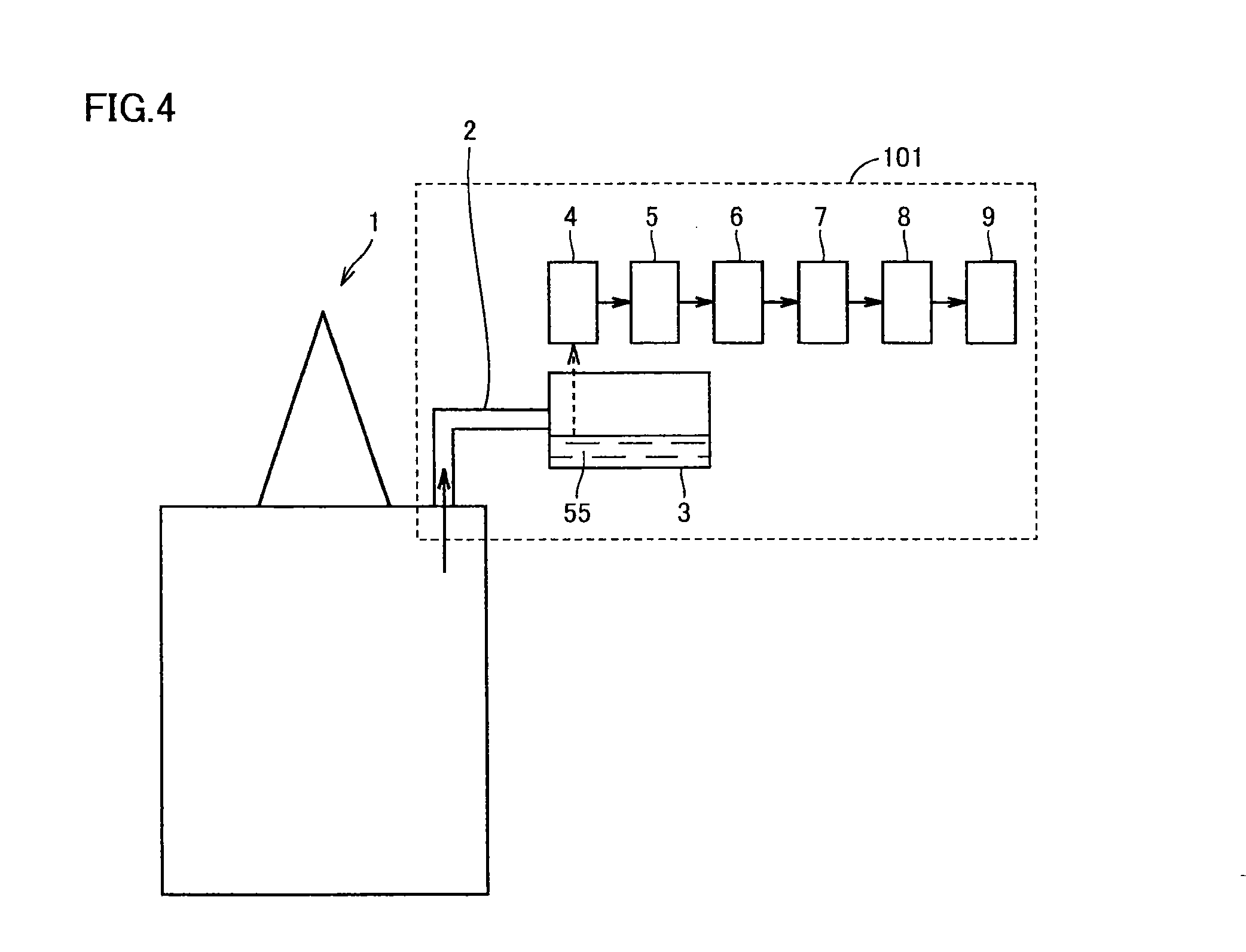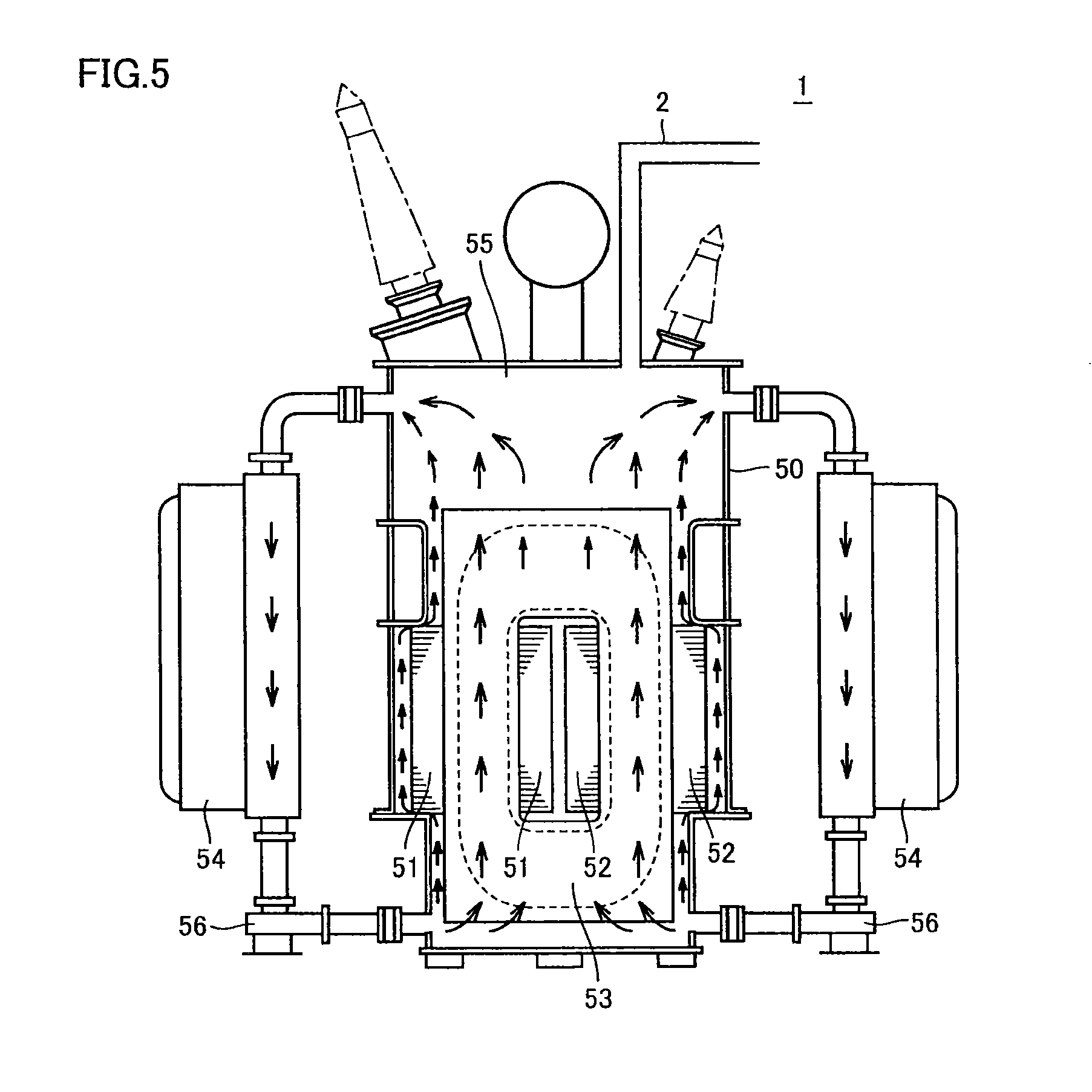Diagnosis method and diagnosis apparatus for oil-filled electrical apparatus
a technology of diagnostic method and diagnostic apparatus, applied in chemical methods analysis, transformer/inductance cooling, instruments, etc., can solve the problems of low insulation performance, ineffective diagnosis technique of existing transformer, and unknown mechanism, and achieve the effect of correct evaluation
- Summary
- Abstract
- Description
- Claims
- Application Information
AI Technical Summary
Benefits of technology
Problems solved by technology
Method used
Image
Examples
first embodiment
[0049]An embodiment of the diagnosis method for an oil-filled electrical apparatus according to the present invention is described. The diagnosis method according to this embodiment is a diagnosis method for an oil-filled electrical apparatus evaluating a risk of copper sulfide generation on an insulating paper surface of a coil or the like in the oil-filled electrical apparatus, and includes:
[0050]a first step of detecting a specific compound contained in insulating oil in the oil-filled electrical apparatus,
[0051]a second step of evaluating a possibility of copper sulfide generation in the said oil-filled electrical apparatus on the basis of the result of detection obtained in the said first step, and
[0052]a third step of diagnosing a risk of anomaly occurrence in the said oil-filled electrical apparatus on the basis of the result of evaluation obtained in the said second step.
[0053]More specifically, the possibility of copper sulfide generation in the oil-filled electrical appara...
second embodiment
[0056]This embodiment is a diagnosis method different from the first embodiment in a point of measuring DBPC and a reaction product of a radical resulting from DBDS as the aforementioned specific compounds, and the remaining points are similar to those of the first embodiment.
[0057]DBDS and DBPC in insulating oil are gradually consumed due to use of the insulating oil in a transformer. Even in insulating oil having contained DBPC and DBDS before use, therefore, there is a case where DBDS and DBPC are not detected in a case of measuring only DBDS and DBPC after long-term use of the insulating oil. In such a case, there is a possibility that the transformer, which must be diagnosed as being at a high risk, is erroneously diagnosed as being at a low risk.
[0058]This embodiment can avoid such an erroneous determination by detecting a compound (reaction product of the radical resulting from DBDS) generated by consumption of DBDS in place of measurement of DBDS.
[0059]For example, benzaldeh...
third embodiment
[0063]This embodiment is a diagnosis method different from the first and second embodiments in a point of measuring a reaction product of a radical resulting from DBPC and a radical resulting from DBDS as the aforementioned specific compound, while the remaining points are similar to those of the first and second embodiments.
[0064]The measurement of the reaction product of the radical resulting from DBPC and the radical resulting from DBDS corresponds to measurement of “a specific compound containing a reaction product of a radical resulting from dibenzyl disulfide and a reaction product of a radical resulting from di-tert-butyl-p-cresol” in the diagnosis method according to the present invention. In other words, the detection of “the specific compound containing the reaction product of the radical resulting from dibenzyl disulfide and the reaction product of the radical resulting from di-tert-butyl-p-cresol” includes not only a case of detecting both of a reaction product of radica...
PUM
 Login to View More
Login to View More Abstract
Description
Claims
Application Information
 Login to View More
Login to View More - R&D
- Intellectual Property
- Life Sciences
- Materials
- Tech Scout
- Unparalleled Data Quality
- Higher Quality Content
- 60% Fewer Hallucinations
Browse by: Latest US Patents, China's latest patents, Technical Efficacy Thesaurus, Application Domain, Technology Topic, Popular Technical Reports.
© 2025 PatSnap. All rights reserved.Legal|Privacy policy|Modern Slavery Act Transparency Statement|Sitemap|About US| Contact US: help@patsnap.com



